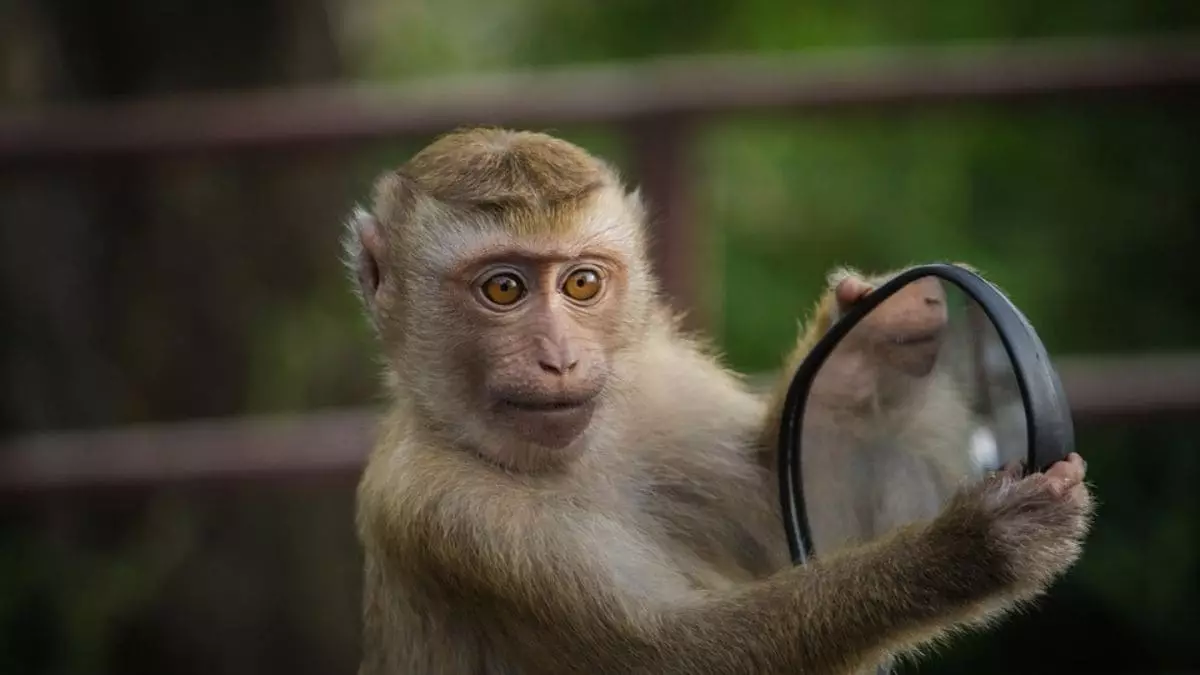The concept of self-awareness is pivotal not just in the understanding of human cognition but also in the study of various animal species. Research into self-recognition, notably through the mirror test, has highlighted a significant aspect of consciousness in animals. Traditionally, self-awareness is gauged through an animal’s ability to recognize its reflection as itself rather than as another individual. However, recent observations involving wild baboons (Papio ursinus) call into question the universality of self-awareness among primates, indicating a more complex narrative than previously understood.
In an intriguing study conducted in Namibia’s Tsaobis Nature Park, researchers set up large mirrors to observe the behavior of two troops of chacma baboons. Over a span of five months, the research team explored whether these primates could connect their reflections with their physical selves. The methodology included projecting laser dots onto the baboons’ faces while they looked into mirrors, a technique aimed at assessing their awareness regarding their reflections. The results were striking: while 64% of the baboons reacted to laser dots projected on visible areas like their arms or legs, only one out of the 51 baboons observed in front of a mirror responded to the dot on their face or ear.
This stark contrast in responses raises critical questions about the cognitive capabilities of these primates. Although baboons displayed interest in the mirrors, it became evident that they did not possess the self-recognition qualities seen in other species. This observation suggests that self-awareness in animals may not be a universal trait but rather varies significantly across species.
Prior studies have employed the mirror test on a variety of animals, including apes, dolphins, and even some fish, which have shown varying levels of self-recognition. For instance, chimpanzees and orangutans have been documented as capable of recognizing themselves in mirrors, employing that awareness to engage in behaviors such as grooming. In contrast, baboons did not exhibit similar reactions, reaffirming findings from previous research emphasizing that certain non-ape primates lack self-recognition abilities.
James Anderson, a primatologist at Kyoto University, noted that findings like these bolster the hypothesis that self-recognition is not universally present among primates, particularly non-apes. While trained monkeys in controlled laboratory environments have shown some capacity for self-exploration using mirrors, baboons in natural settings appear far less inclined to do so.
The complexity of self-awareness itself cannot be understated. According to psychologist Lindsay Murray from the University of Chester, human self-awareness develops gradually and inconsistently; research reveals that only about 65% of children pass the mirror test by the age of two, indicating that self-recognition might exist on a continuum. This revelation opens up discussions around the notion that self-awareness is not simply a characteristic present or absent in animals, but rather a spectrum that exists in varying degrees across different species.
Evolutionary anthropologist Alecia Carter argues that for some animals, particularly baboons, self-recognition may not be essential for their survival. In their natural habitats, baboons thrive through social structures and environmental awareness rather than a need for self-recognition. This suggests that the evolutionary pressures faced by different species significantly influence their cognitive development, leading to diverse manifestations of self-awareness.
Ultimately, the study of self-awareness in baboons sheds light on an intricate web of cognitive abilities that define various species. The findings not only challenge the premise of universal self-recognition across species but also emphasize the need for a nuanced understanding of consciousness in the animal kingdom. As researchers continue to explore these cognitive landscapes, it becomes increasingly clear that the determinants of self-awareness are far more complex than mere reflection, but rather include a matrix of evolutionary, environmental, and social factors. Through such investigations, we can better appreciate the cognitive diversity that exists within the animal world, prompting further inquiries into how we define and understand consciousness itself.

Leave a Reply